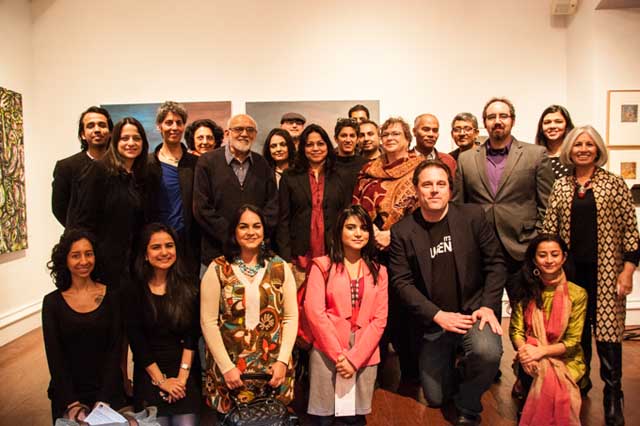
South Asian Immigrant Tales Written in Paint
India, Pakistan, Bangladesh…migrants from towns and villages, leaving everything behind to create something new, something of their own in America.
It’s all about journeys, about the lives you leave behind and the new ones you make. We’ve all got into a plane, left a place and arrived somewhere else. The baggage we’ve carried is physical things – loved old photographs and mementos, homemade garam masala – but it’s also about memories, lost homes and loved ones who are no longer with us.
The way artists deal with this excess baggage and physical and mental borders is through paint and canvas, creating a new reality which did not exist before. For the past ten years, IAAC’s ‘Erasing Borders: has been giving this space to artists to share their creations and their innermost thoughts, and this year too artists participated in this long lasting celebration of home and the world, as more and more artists take on the global trek.
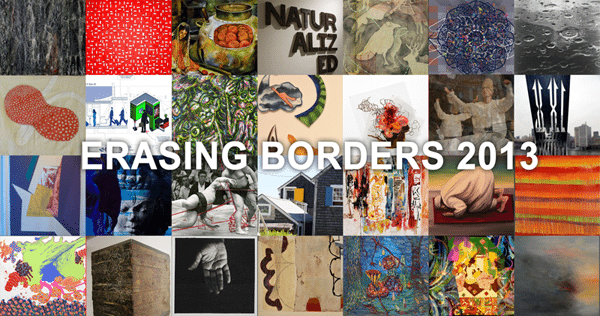
Artists from India, Pakistan & Bangladesh
This year the tenth annual IAAC Erasing Borders 2013: Exhibition of Contemporary Art of the Diaspora opened appropriately enough at the Flushing Town Hall, a historic town house in Queens, a borough which has been home to so many generations of South Asian immigrants. Their mark is upon this borough in the language, in the food and in the many houses of worship, temples, churches and gurudwaras.
Over 28 artists participated and their work was chosen and curated by noted artist Vijay Kumar, who has an immigrant story of his own. He has been curating this show since the beginning as a labor of love. says it was hard to select the final works but he did it as it is a pleasure for him to showcase upcoming artists and the work they do. The exhibition can be seen at The Hammond Museum in June, and will then move to MIT where it will be displayed from mid-September to mid-October 2013.
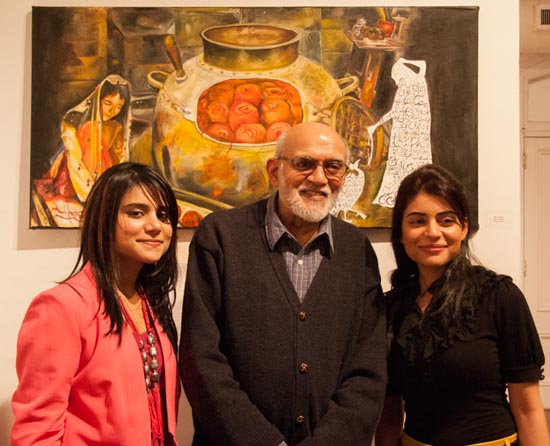
The artists include Aaliyah Gupta, Anjali Deshmukh, Anujan Ezhikode, Avani Patel, Bivas Chaudhuri, Dhanashree Gadiyar, Ela Shah, Tara Sabharwal, Firoz Mahmud, George Ommen, MD Tokon, Mansoora Hassan, Mumtaz Hussain, Mustafa Faruki, Niamul Bari, Nirmal Raja, Parul Mehra, Pritika Chowdhry, Reet Das, Ruee Gawarikar,Sangeeta Reddy, Veru Narula, Alkananda Mukerji, Antonio Puri, Claudia Dias, Reeta Gidwani Kamarkar and Kulvinder Kaur Dhew.
So many names, so many different homes, different cities, different memories. All have converged in America.
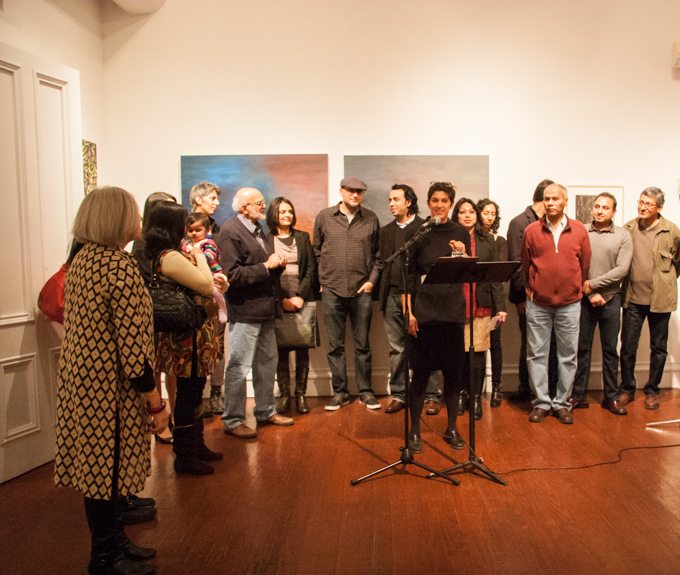
South Asia in America
So as the guests nibbled on vadas and idlis and sipped Indian wine from vineyards in Nasik, they surveyed art by artists from the Diaspora. They were truly in a place where borders had melted – was it America or was it India? Pakistan? Bangladesh? Or a bit of each?
For each artist, it was a negotiated space, a place of their own, at home in the world. Here are the thoughts and input from some of the artists.
Sangeeta Reddy came to the US in 1978 from Hyderabad after studying in Bombay. Marriage brought her to a small town in Oklahoma: “Needless to say, it was a culture shock of an extremely unexpected kind! I now see myself as a hybrid, an Indo-American. My work comes from a place very close to my identity. My earliest influences were a curious mixture of Van Gogh, from when my father picked up a second hand book when I was 6 or 7 and Picasso, when I was 11.” Reddy, who’s been the adjunct facility at Arapahoe Community College for 7 years, teaches drawing. She also is a writer who has written short stories and a novel. Her art has shown in Denver, Aspen as well as in India, most recently in Hyderabad.
Growing New Skin: Disguise, Camouflage, Whitewash
She says of her ‘Ellipse series, ” I believe that life cycles have a way of re-occurring. Only, they never return in perfect circles, but in wobbly, misshapen ellipses, unexpectedly, unpredictably, and yet with a certain rhythm. The shape has always been present in my work from the earliest tentative explorations of an identity of a Universal Soul or Brahman, into abstract shapes.
“The two aspects and layers of my work are deeply connected to the process with which we, as new immigrants, in a sense innocent and unaware, are thrown into and then gradually throw on the skins we need to conceal ourselves to survive and navigate a new culture. In that process it is necessary to feel the perceived insulation of disguise, of camouflage, the whitewash, and yet, the covering is often times inadequate and we may reveal more than we think; our skins are not as thick as we think, and are easily penetrated, bruised and lacerated.
In this process too, we are forever altered, not the heightened ‘global souls’ that we may imagine, but when we do return, in a state of a double exile, we have inevitably started a process where it starts again. Cultures are cruel that way, and unforgiving to those who desert them and then return.”
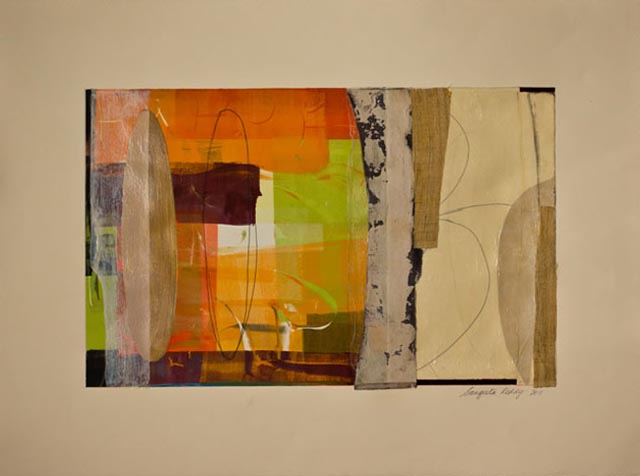
Identity, Struggle and Freedom
Dhanni Shenoy who is from Mysore, Karnataka, India resides in Stamford, CT. She has exhibited mostly in India and came here just three years ago. “I see myself as an Indian, studying the culture of the varied immigration population in America, which fascinates me.”
She describes her work ‘Identities’ as inspired by the emotional and changes of physical space faced by an immigrant: “It depicts the struggles, the sense of freedom and trying to establish an identity in the new country, carrying the past along. It’s a blur between the old experiences and the new ones created. Play, as the title itself suggests, depicts the play of emotions. The circular forms are the depiction of the moon, which I use as a metaphor in most of my work – something which is so precious, but we fail to celebrate it in our busy lives.”
Mumtaz Hussain has left Pakistan but Pakistan has never left him and as a film director, writer and a painter/sculptor, his homeland has stayed with him. His film, ‘Soul of Civilization’ has shown at the Metropolitan Museum of Art. He says, ” I am a native son of Indus Valley Civilization. I am now living in the US but my art reflects my inheritance and I’m proud to pay tribute to the land where I came from.”
Mumtaz who studied art at the National College of Arts in Lahore, has also pursued art in London before coming to New York to study graphic design a the School of Visual Arts. He fuses many different elements of European and American influences as well as ancient architecture and calligraphy into his work, drawing inspiration from his past and present.
“Indians have a very distinct world view, the way we see the world around us and solve problems is very unique among other nationals and cultures which is a source of inner strength and it is in my veins,” he says. “Becoming an American is a process which is another valuable unique life-altering experience. We are often products of multiple cultures and countries – we try to do best out of both. These multiple experiences and cultural backgrounds have enriched American culture in return.”
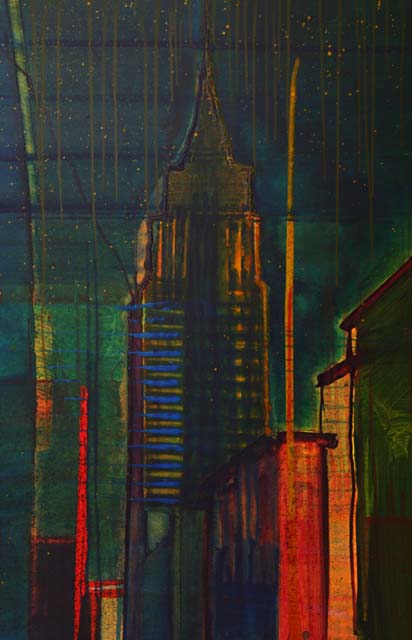
Indian Goddesses, Lady Liberty
” Most of my work, dealing with issues of faith, is about search and survival,” says Ela Shah who came to New Jersey from Bombay in 1972 via the middle East. She received her MA in sculpture from Montclair State University, and has always incorporated elements of her Indian heritage into her work. “Within myself I am in constant need to burn and resurrect fragments of my past and identity. These burnt images are symbolic of purification and transformation.”
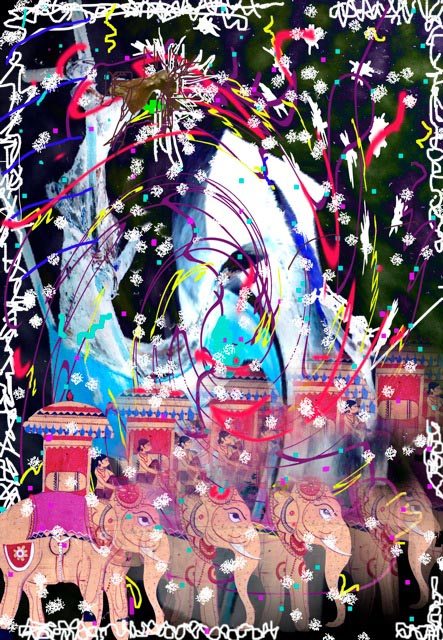
Ela Shah’s work is in collections in several museums including N.J. State Museum, Montclair Museum, and Zimmerli Museum. In it, women are compared with Indian goddesses, and go hand in hand with American pop culture icons such as Superwoman, because they both want to achieve miraculous tasks. Indeed, to start out in a new country with an empty slate is a difficult undertaking. “When one is afraid of losing something dear to one’s heart, like one’s culture and tradition because of immigration, one tries to hold on to it as much as one can. This conflict reflects in my work. I search myself through art and this search helps me to survive in this post-modern world.”
Tara Sabharwal came to the US from India via London. She did her BFA in Baroda so artistically a lot of the sensibilities were already in place.She’s done the Artist Teacher Summer Residency at Cooper Union School of Art in NYC and was also 2008 Artist in residence, Center for International cultural exchange, HISHIO, Katsuyama, Japan.
“Childhood is an intense period, so for sure I see myself as Indian,” she says. ” I also see India from a variety of viewpoints, from a place in America and UK. My art work reflects my Indian-ness and also my non-Indianness and all the shades in between. Life has taken me from my birthplace in Delhi to many new places, homes and identities. The experience has been enriching, it resonates in my work and has enabled me to build bridges between boundaries.”
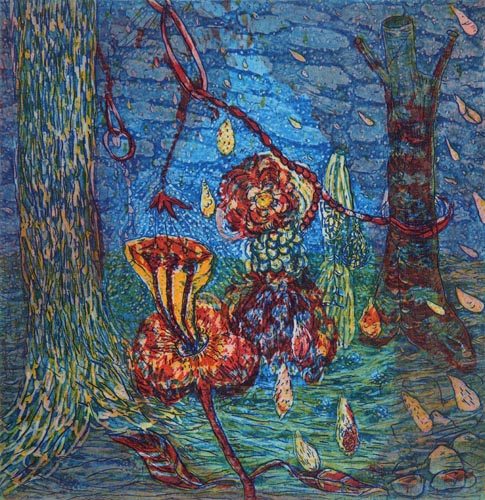
Detours and Homes Left, Remembered
Her work is a sum-total of her experiences and as she writes, “My recent paintings and prints are remembered moments from a journey of outward and inner explorations. These pictures of homes; homes left, lost, remembered, revisited and continually reinvented narrate the story of my own migration and a search for meaning through it. The images I use: homes, ladders, windows, roots, winding paths, rain and container are open-ended symbols. They invite the viewer to make their own interpretations, and reflect.”
Indeed, these visual journeys are collaborative, from what the artist paints on the canvas to what the viewers perceive, colored by their own experiences.
Some journeys take detours. Reeta Gidwani Kamarkar came to the US in 1971, after five years in Rome, and lives and works in Los Angeles now. Painting was all she had ever wanted to do and she got her first major art award at the age of 13 in an International UNESCO juried show in Korea. She got her Laurea from the Accademia di Belle Arti in Rome Italy, and has shown in many art shows including the Modern Art Museum in Ciudad Bolivar Caracas,Venezuela and her work is in the permanent collection of the Roman Guild of Artists.
” I think of myself as an East Indian American,” she says. “Critics both in Europe and America, when they write about me, always mention the fact that my palette harks to my Indian roots. My laurea thesis was on architecture in 14th century Italian paintings. Artists like Piero della francesca and Paolo Ucello used a mathematical pyramid perspective and if one removes the people from their paintings , that right there gave me my spaces and perspective. Then America’s enthusiasm and open mind to the arts allows me to experiment with spaces and non figurative architectural, cut out canvases, without my feeling confined to the rectangle.”
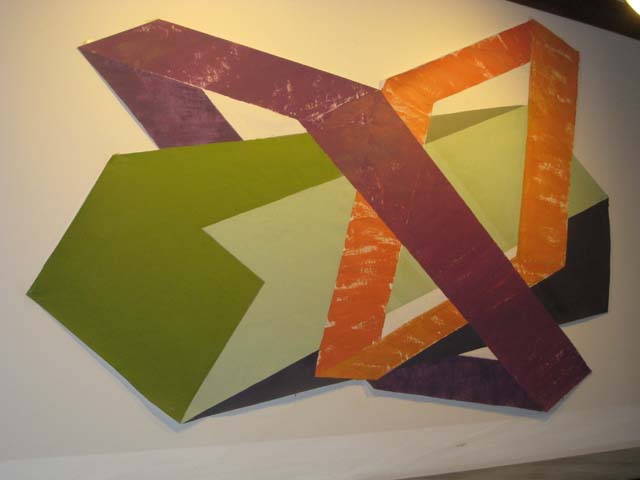
Parul Mehra came to the US in 2000 from India, and lives in New York. She is a textile designer from NIFT and FIT, and has worked with companies like Ralph Lauren, Coach and Blomingdales. She’s worked with Bruce Mau, Mark Pollack and Rachel Doriss, and her inspirations come from the Indian and French classic motifs harmonized with western themes She says, “I see myself as an Indian as well as a New Yorker. I consider myself lucky to have experienced both cultures closely.”
Parul is adept at the techniques of woven textiles, hand printing and embroidery and has a passion for photography. “I believe that photography is a magical process which is driven by impulse, intuition and excitement to make discoveries,” she says. “Photography is about capturing a movement, a passing visual and emotional experience that will never come again. I also take inspiration from rendition of color through light and it’s exposure that creates a subliminal effect which can be captured only in an instant.” In the exhibit she shows works from the series ‘Coastal Retreat’ which feature New England architecture, landscapes and colors.
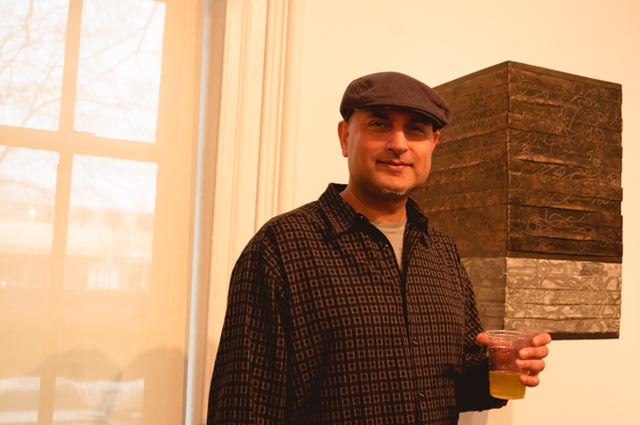
At What Point Does an Indian Become an American?
Antonio Puri grew up in the Himalayas and came to the US in 1984 and currently lives in Philadelphia, PA. He is a mixed media abstract artist who works with contrasting ideas and looks to create a fusion between the East and the West. He’s had over a dozen solo exhibitions worldwide and is in numerous museum collections including the Essl Museum in Austria, National Gallery of Art in Mauritius, Bergen Museum and Noyes Museum in the United States, Musee du Mont Belliard in France. In 2012 he had solo exhibits in India, Austria, and in the United States. He has done residencies in Bulgaria, South Africa, Serbia, Mauritius, and Romania.
“I see myself as a global citizen,” he says when asked about where he identifies himself in this mix of nationalities and ethnicities. How does his artwork reflect his beliefs and identity?
“I question labels,” he says, pointing to his piece of art in the exhibit, a work that defies categorization. ” I created a work of art that is made up of a stack of paintings but very few will call it a painting any more. It has been called sculpture, installation art, conceptual art – despite the fact that it is just a stack of paintings. Is this need for labeling everything and everyone necessary or just done by habit? I am exploring this question – at what point does an Indian become an American?”
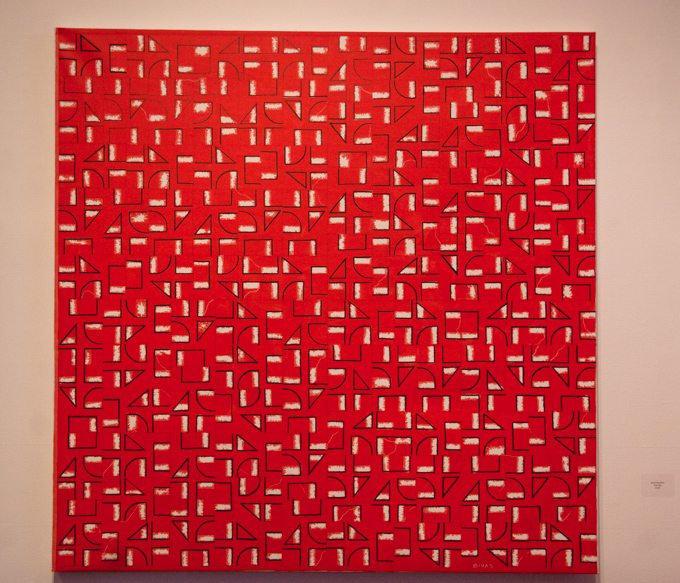
Looking for a Place of One’s Own
“My current work is involved with space, which is full of energy. I use repetitive visual elements and meditative process to energize the whole space. The highly structured slowly changing imagery has a close resemblance to my state of mind,” says Bivas Chaudhuri who came in the 80’s and whose search for a permanent home of his own is the inspiration behind his latest work.
“Most of my paintings are done with unconscious mind and with intuition but this one seeks to find some connection with my long quest for a place, a home of my own. I was following the housing market which was depressed for long time.” Chaudhuri who has learned architectural design and drafting and worked for architect firm, believes you could incorporate almost any knowledge skills into art.
“Indians have a very distinct world view, the way we see the world around us and solve problems is very unique among other nationals and cultures which is a source of inner strength and it is in my veins,” he says. “Becoming an American is a process which is another valuable unique life-altering experience. We are often products of multiple cultures and countries – we try to do our best for both. These multiple experiences and cultural backgrounds have enriched American culture in return.”
Life along the Ganges River, Going with the flow
Alakananda Mukerji came to the US In 1998 and lives in Manhattan. She is a professor in the studio art department of Manhattanville College in Purchase, New York. She has a Ph.D in art history and an MFA in studio art. She has had major exhibitions in New York. Ask her if she identifies with India or America, and she says a little of both. “I try to mix both cultures in my everyday living. Diversity is what I like of both countries. My art work is still very much of Indian subjects. I like the bright colors in food, clothing and landscape of India. I have adopted the techniques of different mediums in this country and represent the mix of both cultures. I would love to do so for rest of my life!”
As she writes, “I grew up on the River Ganges. I have long since left the narrow streets of Benares where life is awash in a flood of color and a constant stream of souls. Yet however so far I may find myself from those ancient riverbanks, my memory, my art, and indeed my very being — these are forever caught up in the notion of endless, sacred flow.
People and faces, the surge of sounds, the unfathomably old commingling with the untarnishedly new — all the rhythms and rhymes of India: this is the wellspring of who I am. I flow from this source, but I have become the river – changing, evolving, flowing. And what flows from me, my painting, it is often a conversation between the me that was and the me that is becoming. Memories, media, materials – bits of canvas, pieces of the past – anything I can get hold of: this is my art. I am the medium. I am the flow.”
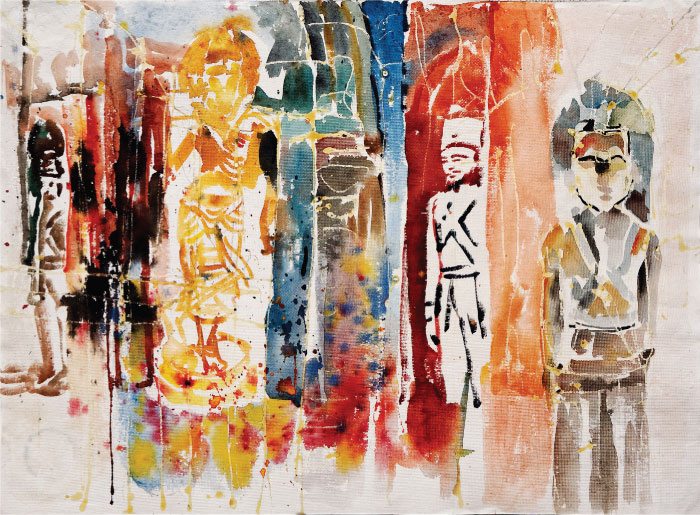
Marriage brought artist Ruee Gawarikar to US in 2004 from Pune, India, and she had to transition into a new life. She recalls, ” I was like a fish thrown out of water. Plus my dependent status meant that I was unable to work. It was really painting that saved me. Rather than wasting my time and emotions, I thought I would use them in my work. At first, I was very much homesick. I never thought of myself as anything other than an Indian. However, over time, and with exposure to a different culture, I became aware of many more things around me. I realized it isn’t about where you stay, but rather about who you are, wherever you may be. Now I think of myself as an international citizen.
Of course being an Indian for so many years, it isn’t easy to let go of my beliefs, nor would I want to. The tree may flower anywhere, but the roots are definitely in India. I have always been attracted to the Indian miniature, its colors and stories. Being a Kathak dancer, I have also been influenced by the drama aspect in Indian performing arts which gets translated in my work.”
Mansoora Hassan, a multi-media artist who lives and works in both the West and the East, and she says she is fully at-home within traditional Islam and liberal, secular societies. “Art dialogue is a crucial platform for intercultural exchange to overcome polarization and promote a sense of shared humanity, in our increasingly dissonant world. My mixed media and video works serve as a conduit to stimulate a response and engage in positive dialogue and are influenced by Sufi thought – I have traveled worldwide seeking the common thread of spirituality that binds us.”
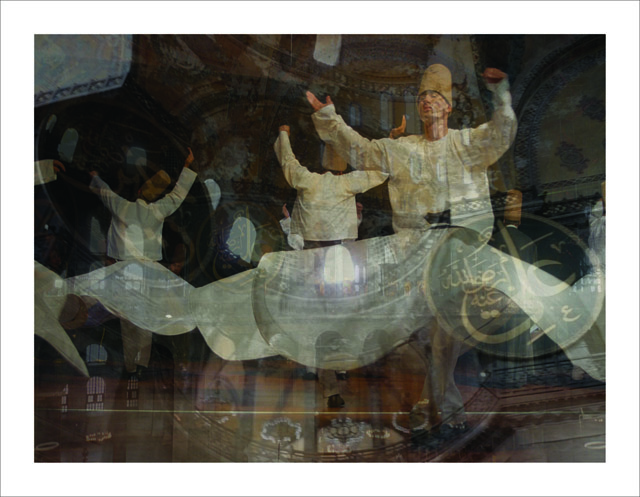
Aaliyah Gupta arrived in the US from Kolkata in 1982, to go to college and received an MFA in painting from the State University of New York at Stony Brook. She now lives in Seattle and has created a whole new world, making art, growing vegetables, working toward social change and loves to feed people. Gupta, who lives with her husband, twins and two cats, says she’s happiest when she can do all of this concurrently.
“I identify as Indian, primarily, but having lived in the US for over 30 years, though, puts me in the Diaspora category,” she says. ” For me, identity is fluid, dynamic and multifaceted – not a single concrete thing. My art is informed by my experiences, my interactions, and the way I see the world. In some cases, you can see a very direct connection between something I experienced and pieces that emerged from those experiences.”
About her Life Series, for example, she says, “The sickness and death of a close friend resulted in this series of charcoal drawings. The treatment and processes undertaken in the attempt to save my friend’s life were aggressive and intrusive. I appreciated the advanced technologies that might save her life, yet I resented what felt like an invasion of her body and soul. The tension between my two responses resulted in drawings about physical and metaphysical inner spaces, and excavations of the deepest and most fragile recesses of body and soul.”
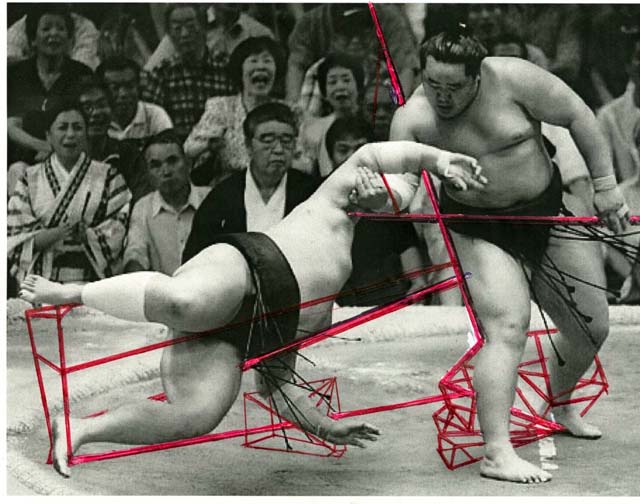
Lapaya, Cow Dung and Sumo Wrestlers
“I see myself as an Indian-Bangladeshi inverted myself into very much Indian Culture,” says Firoz Mahmud, who is from Bangladesh. ” I still believe that there is no border of social culture, family culture, food culture, dress culture and all over regional culture among three invisibly bordered countries.” he has a Ph.D from Tokyo University of the Arts, MFA from Tama Art University and MFA & BFA from Dhaka University`s Fine Art Institute .His artist residency program includes Rijksakademie Van Beeldende Kunsten, Amsterdam, ISCP New York and OZU Culture Center, Rieti/Rome.
Most of his works are based on Indian subcontinental or indigenous past and present, political ideas of nationalism, humor, belief and stratification within daily life. His stencil painting Layapa Art techniques are taken from Japanese woodblock printing and Bangladeshi rural cowdung painting. He says: “The ‘Layapa’ is a Bengali word which means render. I render history in the similar way how rural women in Bangladesh render their belief with cow dung and mud onto their hut. I render south-Asian history and myth from old local manuscripts on shaped stretched canvas.”
Yet artists are nothing if not absorbers of the varied cultures they face and so in the Erasing Borders exhibit he showed his photographs of Sumo wrestlers in Japan.
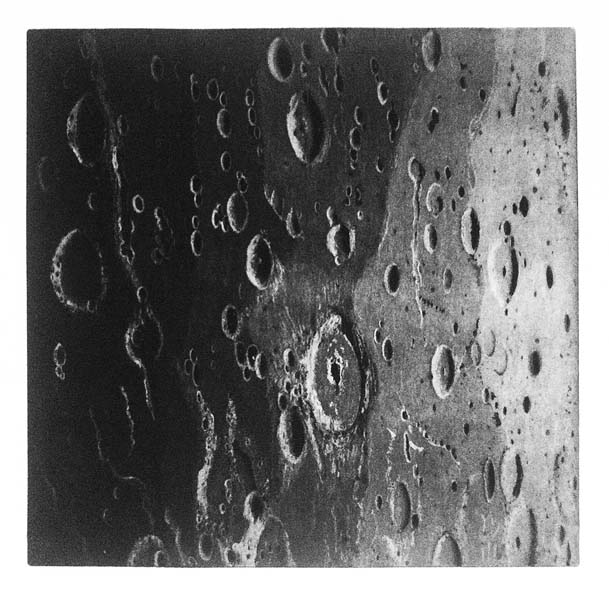
Claudia Dias, who is of Indian and German heritage, arrived from Europe and then Asia, where she had wanted to open up an architecture office in Mumbai. However, the sudden Asian economic crisis forced her to leave and come to New York. In Germany, she says, according to German law, one receives the nationality of the father and the religion of the mother. “I visited my Indian family and friends on a yearly basis and kept in touch with them also when I worked with Rem Koolhaas on my Master thesis for architecture and urban planning which was a 18 months project on the city of Mumbai, I moved to Mumbai to do my research work.”
Does she see herself as an Indian, German or American? She says, ” Having lived in many countries in my life – Munich, Berlin, Vienna, London, Hong Kong, Mumbai, Amsterdam, and NY, I believe there is little of any strong cultural heritage left in me; in particular if you live in a melting pot like New York for an extended time, these borders do blur. However, I think one always acts in certain cultural ways, and I do feel sometimes more Indian then German. Living in America, however, erases that distinction more and more.”
How does her artwork reflect her beliefs and identity? Her answer is surprising and complex, weaving all identities into her art. ” I think being so intensely fascinated with astronomy might have to do with my Indian heritage. Using the 15th century technique of etching, is a curiosity for my German heritage, but since I am using as inspiration NASA photographs from the Hubble Telescope, it is my testimony of embracing the advanced technologies of the US.”
Lost Homelands Remembered, Realigned
And for some artists, the lost country and its memories become a citadel, the scaffolding on which everything else rests. George Oommen is an architect and painter living in Massachusetts, whose painting is entirely devoted to remembering his native Kerala, the spice coast of southwest India.
Born in Munnar, Kerala, and educated in India, Mexico, and the United States, Oommen continues to derive artistic inspiration from the lush green landscapes of his homeland. Every winter, he visits Mankotta, a small island in the inland waters of Kerala, close to his ancestral home and the weeks spent there fuel his painting year round.
To him, Kerala is a very special place and he wants to recreate it for those who have never been there. As he told Ebrahim Alkazi in an interview: “Kerala, one of India’s twenty eight states, is a narrow strip of land lining the Southwest corner of India. Physically, the region is characterized by numerous rivers and backwaters that are quite panoramic. The network of waterways is lined with dense, verdant foliage in some places, but in others, there is an open latticework of fringed palm trees.”
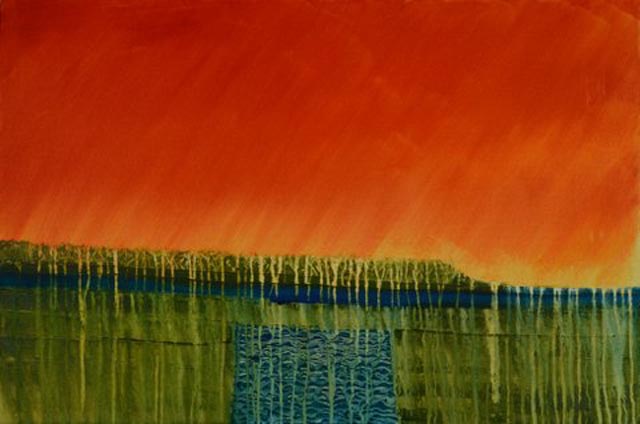
During the day, the waterways, being the main mode of transport, are heavily trafficked. In the early mornings, however, they are perfectly still. Oommen says, “When the waters are that placid, they become mirrors, reflecting the sky, greenery, and tranquility that abounds. This is my favorite time of day and scene to paint. In fact, some of my paintings have been hung inverted in galleries and printed upside down in publications because these mirrored images appear to be so real!”
In the end, truly, perception is everything and these artists etch out their views of the world around them on their canvases, composing their own stories of migration, of change and rebirth, of loss and gain.
Real or imagined? Surreal or factual? Memory or wishful thinking?
Immigrants always carry their versions of the home country, like a sacred talisman, close to their hearts.
If you enjoyed this article, don’t forget to LIKE Lassi with Lavina and sign up for the free newsletter!

2 Comments
Via Lassi with Lavina Facebook page
Shefalee Amin Patel likes this.
Rachna Daryanani It is wonderful how some can express so well how all of us feel. It is impossible to erase your roots,and also equally impossible to not be influenced by where you live!
239 people saw this post
via Facebook Page
Aruna Pulipaka Magier, Rachna Daryanani, Swati Bhattacharya and 5 others like this.